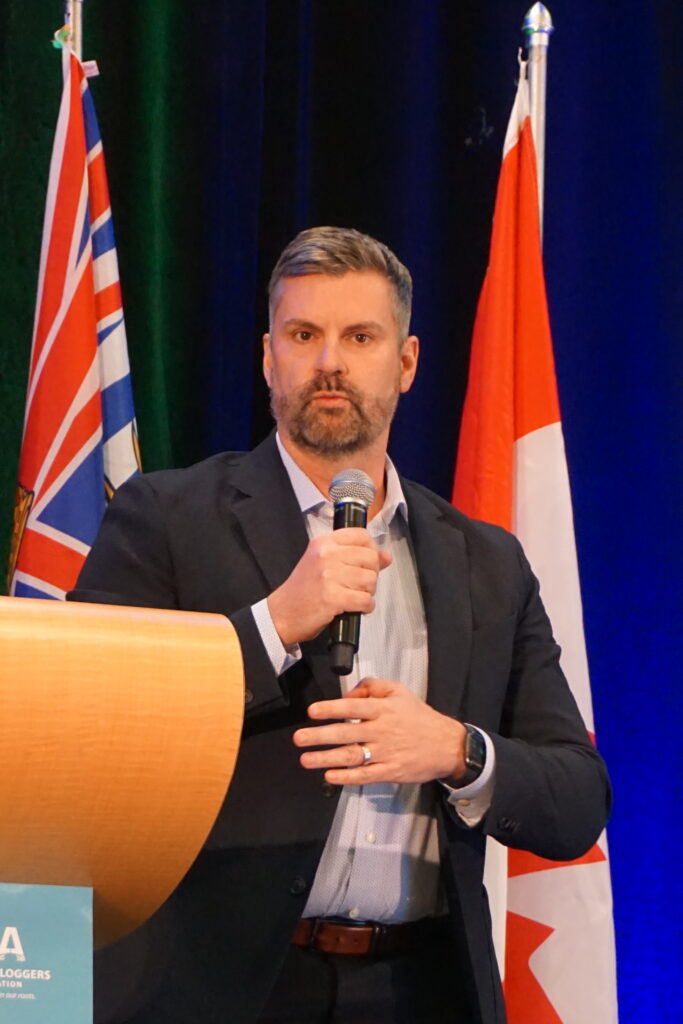
Industry News
News
Policies
Canada must keep pace with U.S. policy to remain competitive: FPAC
March 27, 2023 By CFI Staff
 FPAC president and CEO Derek Nighbor in Vancouver, B.C., Jan. 20, 2023. Photo: Annex Business Media.
FPAC president and CEO Derek Nighbor in Vancouver, B.C., Jan. 20, 2023. Photo: Annex Business Media. The changing U.S. policy environment demands that Canada keeps pace to remain competitive or face the consequences of falling behind, said Derek Nighbor, president and CEO of Forest Products Association of Canada (FPAC).
In a statement, Nighbor said, “An array of new prospects and obstacles rest at our bilateral doorstep as we embark on the greatest economic feat of the next two decades – the transition to a low carbon economy across North America.
President Biden’s visit to Ottawa this week reminds us that our true collective strength in achieving net zero lies not only in managing our natural landscape responsibly but also in how we collaborate to achieve shared goals.
Canadians and Americans have persisted in our joint pursuit of enabling opportunity for citizens, prosperity for businesses, and upholding environmental stewardship across generations and geography on both sides of the border.
This notion is no more evident than when looking at our symbiotic trade in natural resources. According to the U.S. Census Bureau, $437 billion in Canadian goods flowed into the U.S. (including nearly $23 billion in lumber and engineered wood products) in 2022. And while Canada and the U.S. have weathered a longstanding history on forestry trade relations, the importance of an integrated lumber market must not be understated.
Not only is Canada the largest softwood lumber exporter to the U.S., but over the past ten years, the U.S. has consumed an average of 38 per cent more softwood lumber than it produced annually, according to the Forest Economic Advisors Lumber Quarterly Forecast report. This means American demand for lumber far exceeds what the American forest sector can produce by a significant margin. This gap is expected to remain large over the next decade as the U.S. turns to lower carbon building solutions and builds more affordable housing.”
Read Nighbor’s full statement.
Print this page